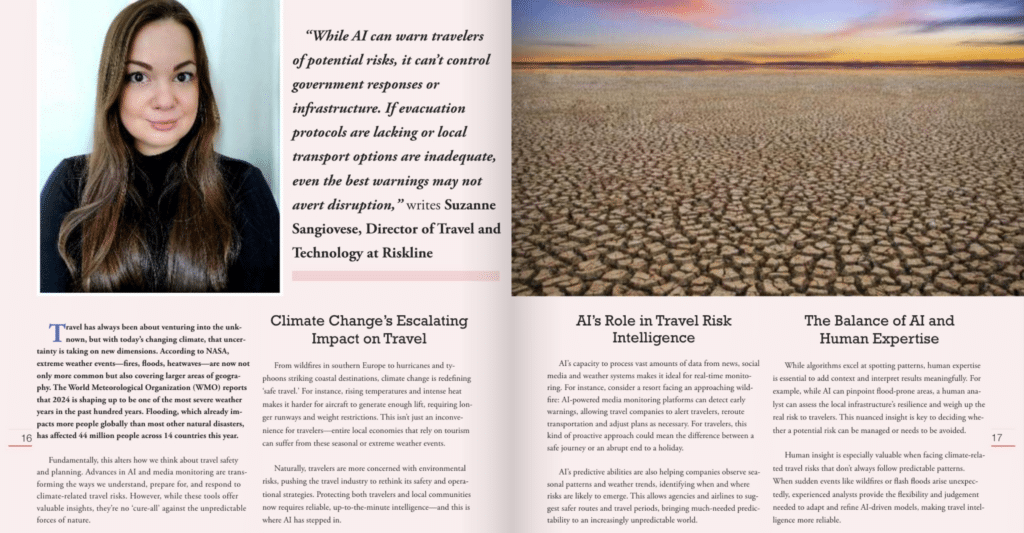“While AI can warn travelers of potential risks, it can’t control government responses or infrastructure. If evacuation protocols are lacking or local transport options are inadequate, even the best warnings may not avert disruption,” writes Suzanne Sangiovese, Director of Travel and Technology at Riskline.
Travel has always been about venturing into the unknown, but with today’s changing climate, that uncertainty is taking on new dimensions. According to NASA, extreme weather events—fires, floods, heatwaves—are now not only more common but also covering larger areas of geography. The World Meteorological Organization (WMO) reports that 2024 is shaping up to be one of the most severe weather years in the past hundred years. Flooding, which already impacts more people globally than most other natural disasters, has affected 44 million people across 14 countries this year.
Fundamentally, this alters how we think about travel safety and planning. Advances in AI and media monitoring are transforming the ways we understand, prepare for and respond to climate-related travel risks. However, while these tools offer valuable insights, they’re no ‘cure-all’ against the unpredictable forces of nature.
Climate Change’s Escalating Impact on Travel
From wildfires in southern Europe to hurricanes and typhoons striking coastal destinations, climate change is redefining ‘safe travel.’ For instance, rising temperatures and intense heat make it harder for aircraft to generate enough lift, requiring longer runways and weight restrictions. This isn’t just an inconvenience for travelers—entire local economies that rely on tourism can suffer from these seasonal or extreme weather events.
Naturally, travelers are more concerned with environmental risks, pushing the travel industry to rethink its safety and operational strategies. Protecting both travelers and local communities now requires reliable, up-to-the-minute intelligence—and this is where AI has stepped in.
AI’s Role in Travel Risk Intelligence
AI’s capacity to process vast amounts of data from news, social media and weather systems makes it ideal for real-time monitoring. For instance, consider a resort facing an approaching wildfire: AI-powered media monitoring platforms can detect early warnings, allowing travel companies to alert travelers, reroute transportation and adjust plans as necessary. For travelers, this kind of proactive approach could mean the difference between a safe journey or an abrupt end to a holiday.
AI’s predictive abilities are also helping companies observe seasonal patterns and weather trends, identifying when and where risks are likely to emerge. This allows agencies and airlines to suggest safer routes and travel periods, bringing much-needed predictability to an increasingly unpredictable world.
Read the full article on pages 16 and 17 of Touristica International.
Photo credits: Touristica International
